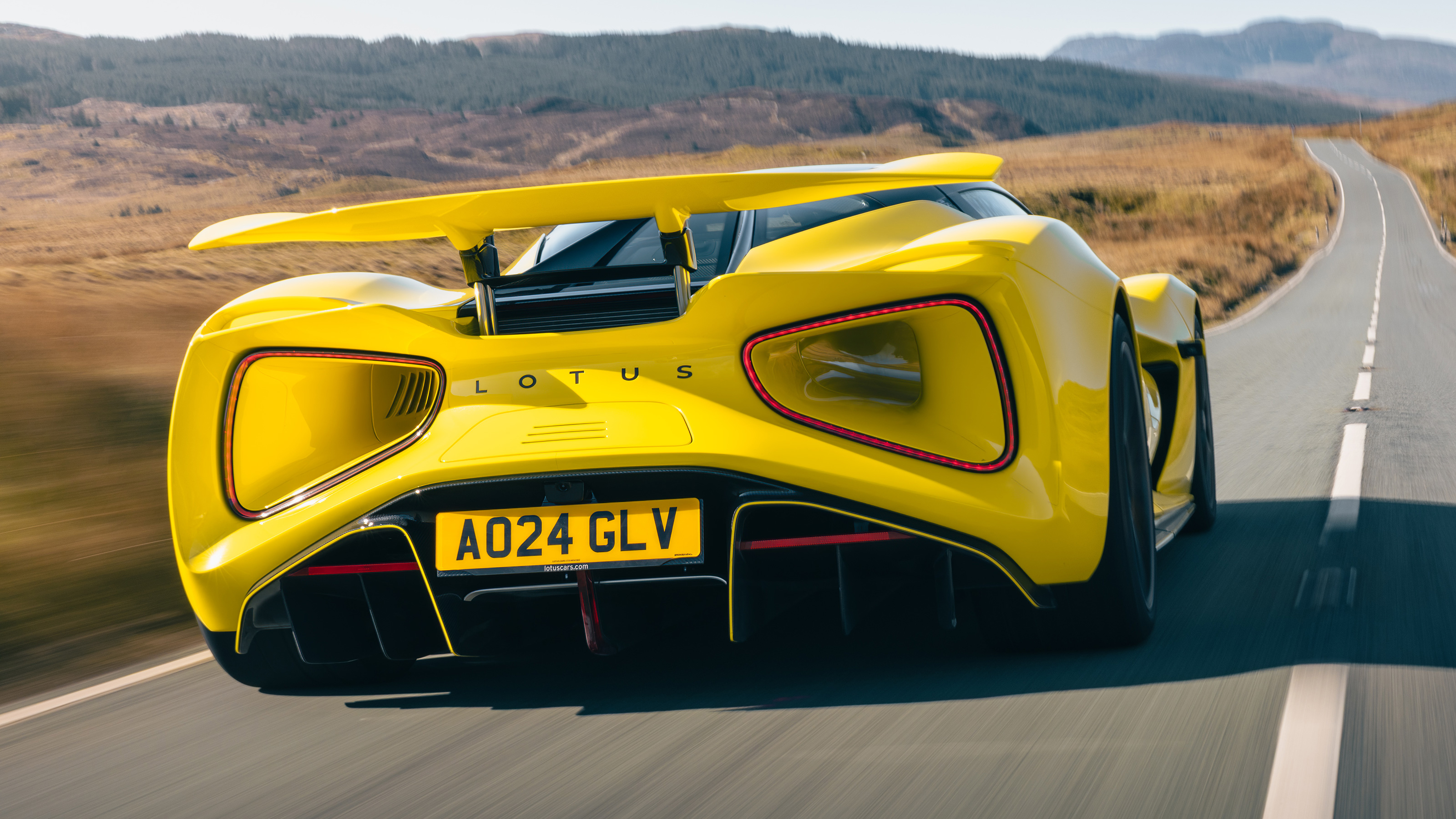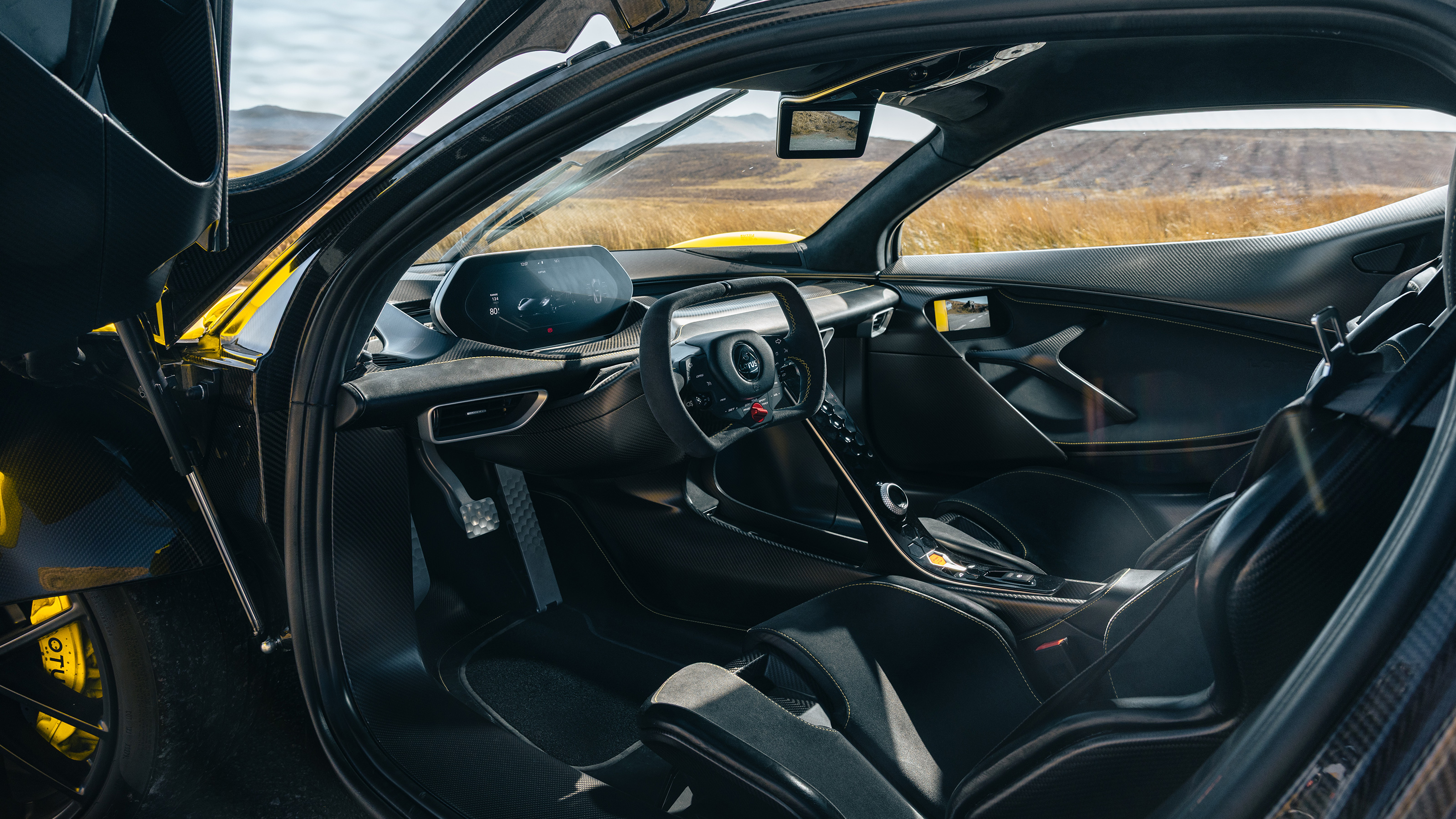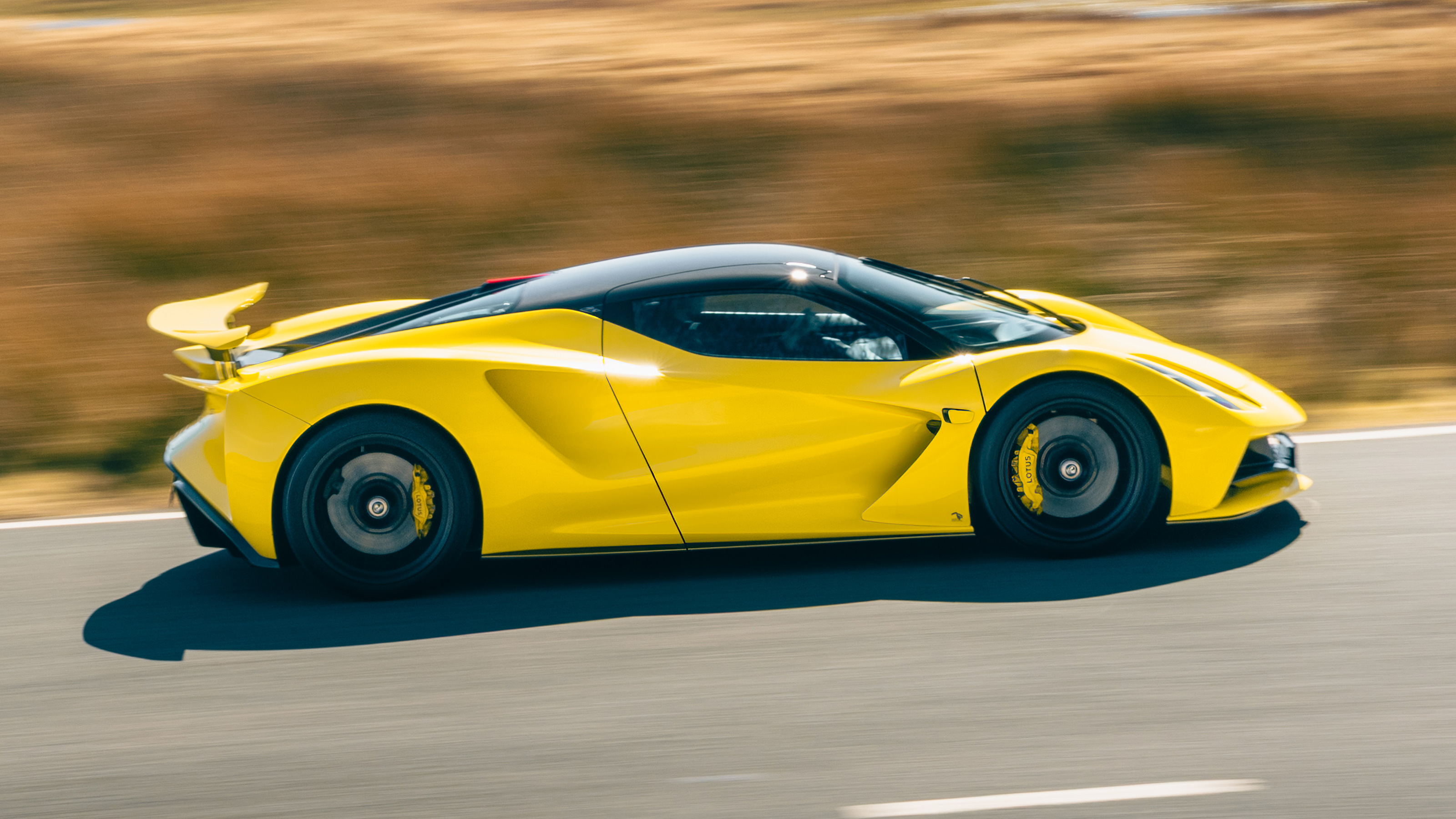
Interior
What is it like on the inside?
More complication. The dihedral doors are pure concept car theatre. You can open them from the outside using the key fob or close them using a button on the doors’ under side. If you’re inside the car, there’s a button for each door on the roof header. Lovely idea in theory, rather irritating in practice. Colin Chapman’s most famous mantra was ‘simplify and add lightness’. These doors add weight and complexity.
The Evija’s key lives in a little pocket in the centre console and its transponder demands that it sits inside it in a very specific way. Nothing will work unless it’s correctly located. A rear-view camera and pop-out side cameras add a techy dimension and ease the drama of reverse parking. Up to a point: judging distance is still tricky, the side view deceptively angled.
How does it feel inside?
Thanks to its configuration, you sit low in the Evija like you do in a conventional sports car. It’s relatively easy to get in and out of, and user-friendly once ensconced. The design team fought to include what they call ‘Becker points’ – prominently rising front wings (named after legendary Lotus test driver Roger Becker) – that help the driver place the car on the road.
There’s a central spine in the windscreen where the huge wiper parks itself, but you don’t notice that after a while. And the F1-style cut-down steering wheel, which could have been a clumsy affectation, is actually effective. If not actively better: turns out you can’t reinvent the wheel. You adjust the drive modes via a lozenge on the wheel, in a manner reminiscent of Ferrari’s manettino.
The Evija’s interior echoes the exterior design, in the sense that it’s defined by what’s missing as much as by what’s actually there. A refreshingly simple instrument binnacle sits on top of a carbon fibre exo-skeleton, while a slender central spine – known as the ‘ski jump’ – houses a series of hexagons, each one triggering a different function. It’s more concepty thinking made real, and it mostly works; the function graphics coolly back-lit.
Until it stops working, that is. The glow on the AC button disappeared just as the weather was heating up outside, and on another occasion the indicators literally went on the blink. All sorted by, yes, turning the whole thing on and off again, but definitely sub-optimal.
We’re guessing it’s not entirely practical…
There’s room behind the ‘jump’ for a pair of mobile phones, but elsewhere design wins out over practicality. Travelling light is the order of the day here, with room for perhaps one soft bag by the passenger’s feet or behind the seat. At a push.
Featured

Trending this week
- Car Review
BMW iX3






